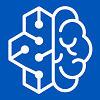Kutatási célkitűzések:
Future network services and applications pose serious challenges on the underlying networks. For example, Tactile Internet will require extremely low latency (as small as 1ms round-trip time!) in combination with ultra-high availability, reliability and security in order to enable remote driving, remote surgery or wireless controlled exoskeletons, just to mention a few applications which could reshape our society. As the speed of light is a given constraint, we need novel approaches, for example to dynamically move network "capabilities" close to the users. In order to fulfill the new requirements, we need to add more intelligence, automation, adaptability, and flexibility to networks at different levels and operation planes (data, control and management planes as well). The key enabler of this process is the softwarization of the whole networking architecture. The recent paradigm shift in networking is driven by two technologies, namely, Software-Defined Networking (SDN) and Network Function Virtualization (NFV). SDN addresses the softwarization of the control plane, while the main goal of NFV is the softwarization of the data plane.
Kutatási feladatok:
- Create an advanced service plane enabling novel, on-the-fly created services spanned across multiple domains and operators; define novel template languages and/or high level, declarative description languages for describing the logic and SLA parameters of given services; implement a compiler as a service orchestrator.
- Optimize the network operation with a novel orchestration and control plane which supports
i) flexible, dynamically configurable virtualization of different resources (such as compute, storage, and network resources),
ii) resource optimization based on configurable objectives (e.g., green operation, uniform utilization, policy enforcement),
iii) inter-, and cooperation between operators.
- Analyze the performance of the virtualized data plane; define novel abstract graph models for describing different types of resources, relations and operations which can capture the intrinsic behavior of numerous data plane solutions; design and implement local orchestrator algorithms which can dynamically optimize and re-optimize the use of resources at a time scale matching the extreme requirements.
előírt nyelvtudás: angol
felvehető hallgatók száma: 1

